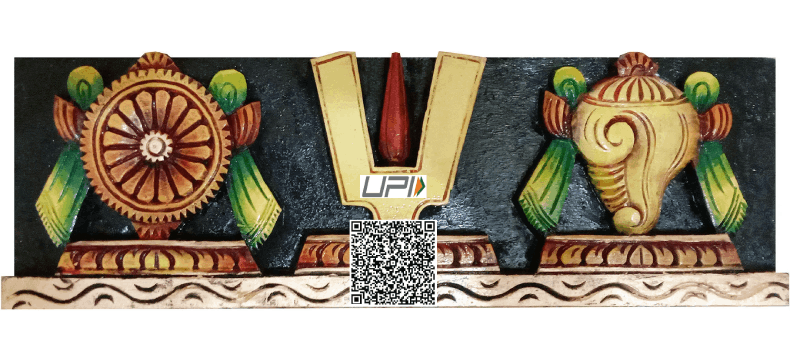
A month after demonetization, Prime Minister Modi, while addressing a rally in Moradabad, referred to a viral WhatsApp video where a beggar was using a card swipe machine to seek alms from people digitally! He was using the story to inform people that Indians do not take long to accept new things.
It’s a different story that it was a promotional video made by Numero Graphic Creative Solutions Private Limited, a Hyderabad-based data processing, and visualization company, back in 2014. It just happened to viral on WhatsApp in the aftermath of demonetization. And to be fair to our Prime Minister, he did add, “I don’t know how far it is true but there is a video going viral on Whatsapp…” as context.
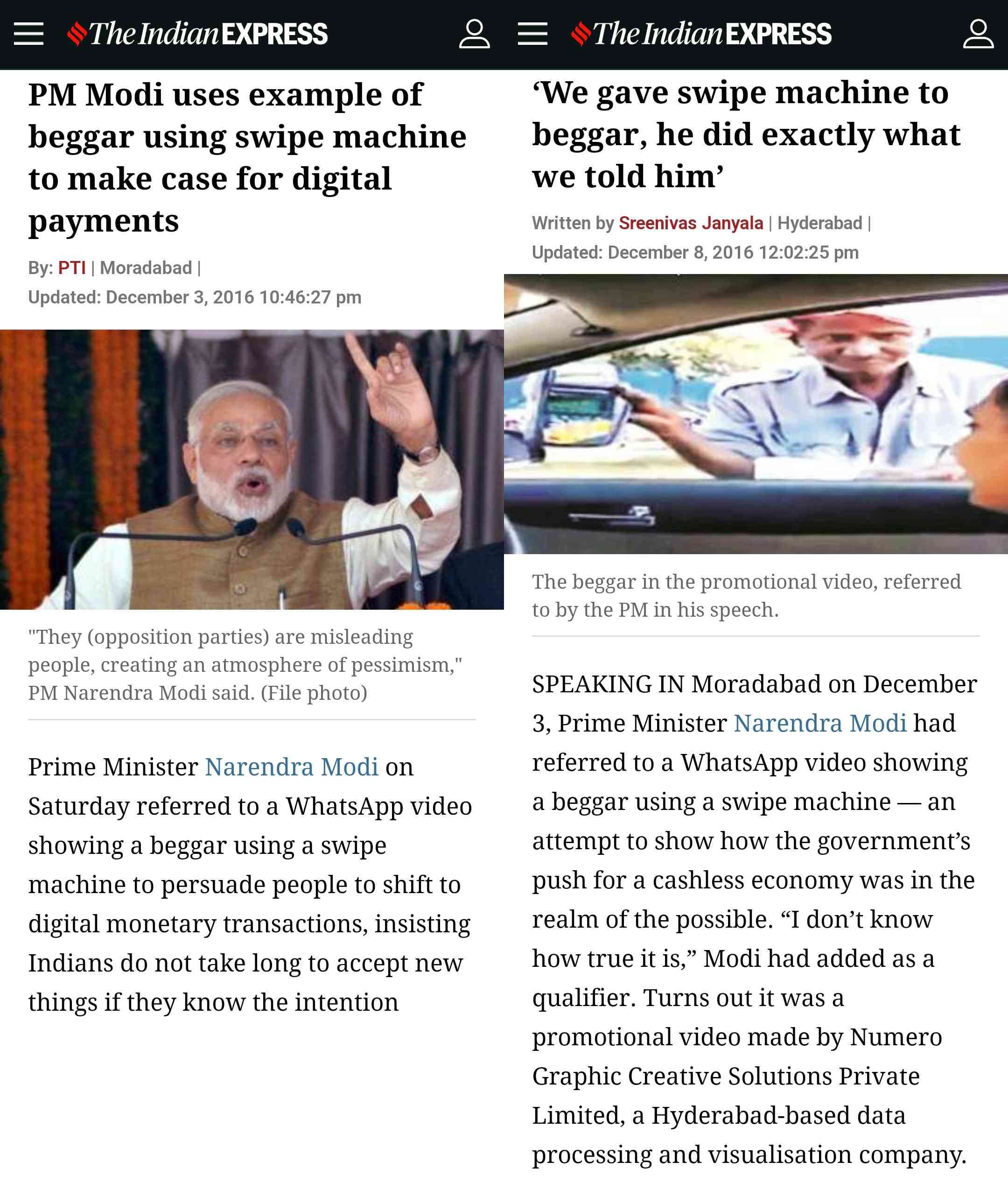
We have come a very long way since then. There are legitimate stories of beggars roaming around with UPI QR codes instead of a bowl!
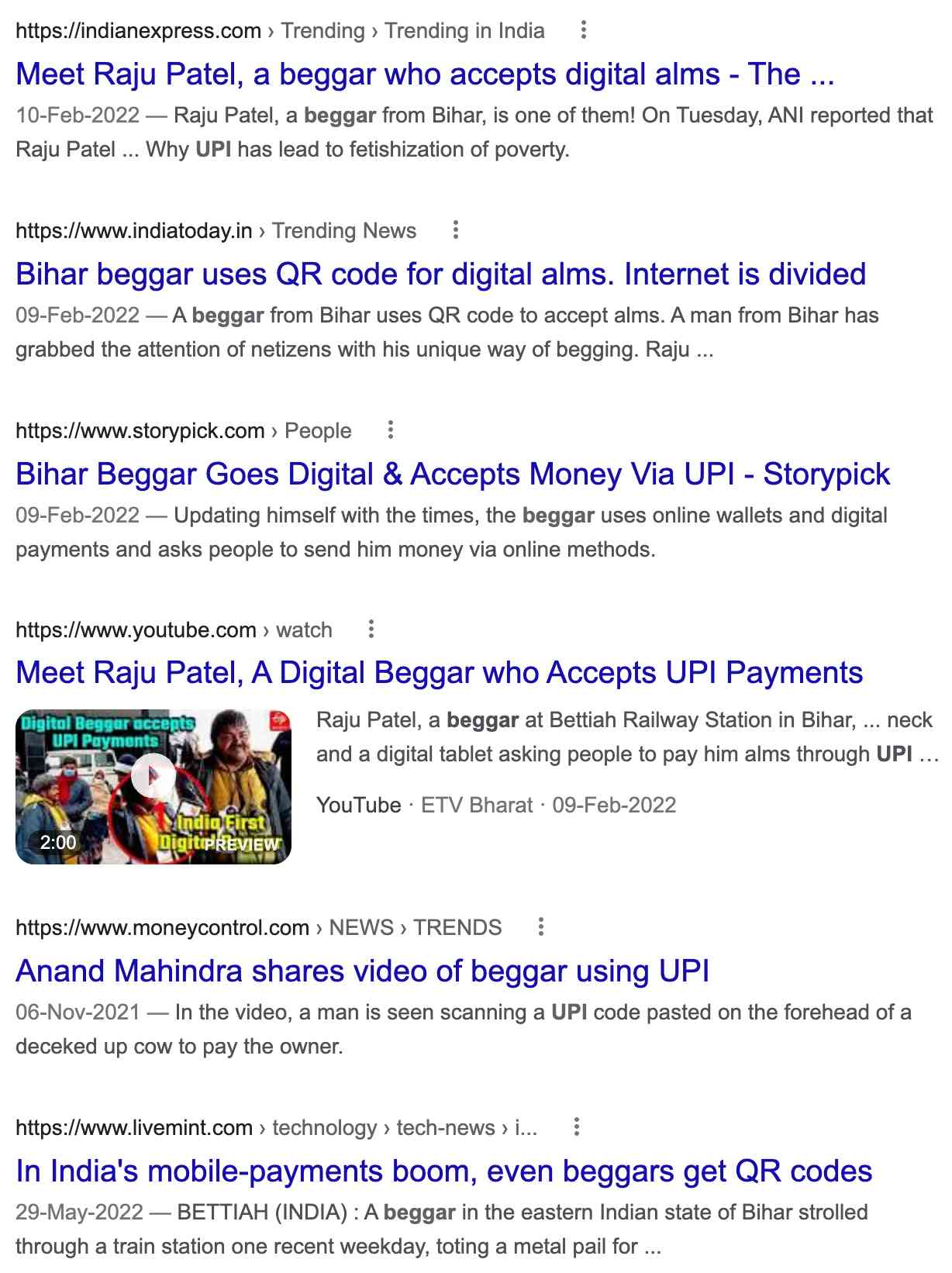
These days, it is incredibly difficult to get change. But almost everywhere that we used change earlier, we can pay digitally. I realized the sheer ease of this movement from cash to digital payments when we drove from Bengaluru to Coimbatore twice, in April and May 2022. This was our first long drive after the pandemic.
The earlier drives involved us carrying a bag of loose change and cash in small denominations to pay for the many tolls on the highway. I had got myself a Fastag in late-2019 but did not get an opportunity to use it till the recent drives this year. The experience was absolutely incredible. When I shared this on Twitter some days ago, people did add that there were tolls that were slower in reading tag (causing some delay), but my route between the cities was phenomenally smooth and effortless.
Now, just consider the intent behind digital payments. Highway tolls (via Fastag), shops, restaurants, roadside vendors, etc. are simple commercial transactions. With beggars, things start to get uniquely interesting.
But where things go totally interesting is when temples have started to accept the hundi money digitally!
It’s quite a trend already, and it started almost tentatively during the pandemic.
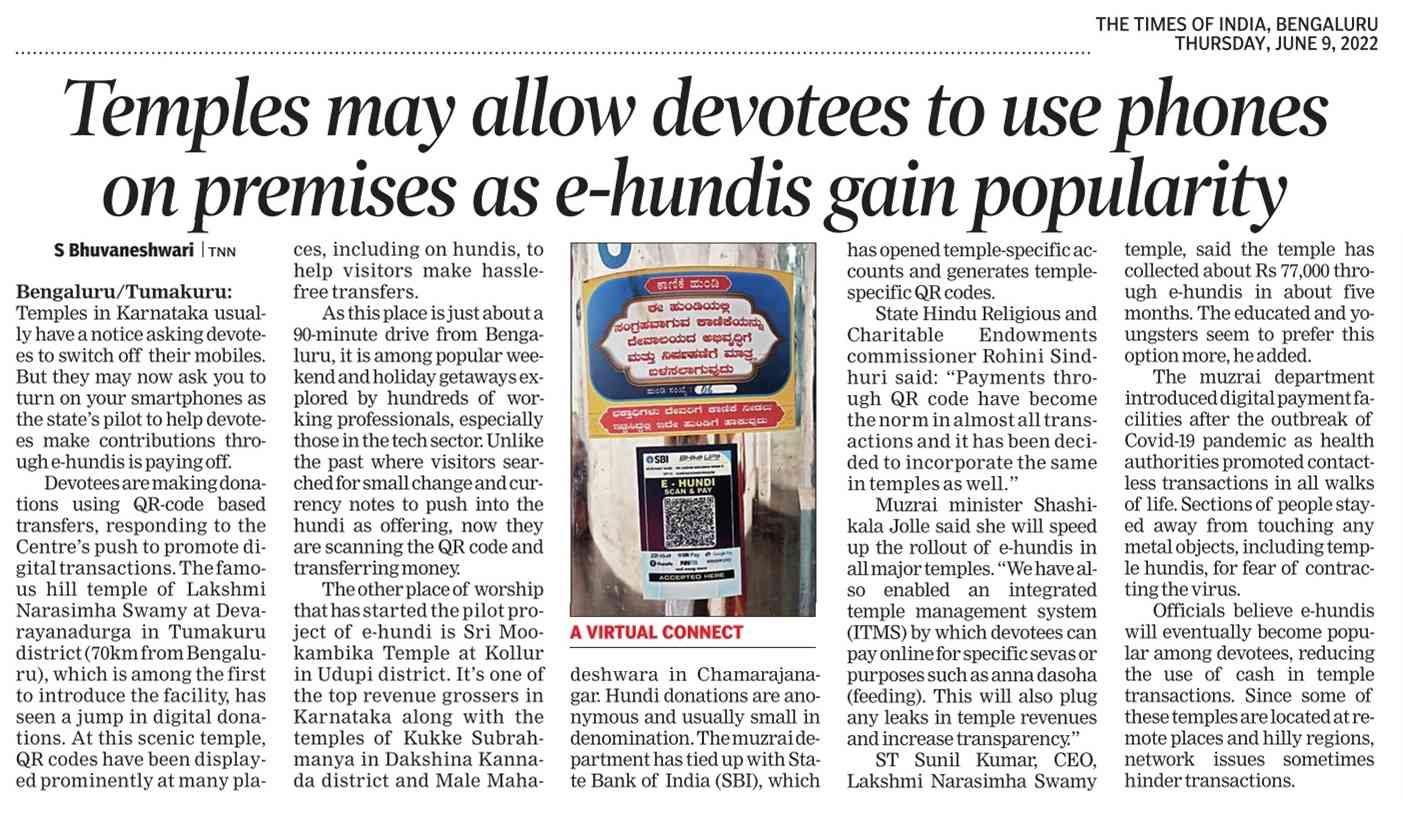
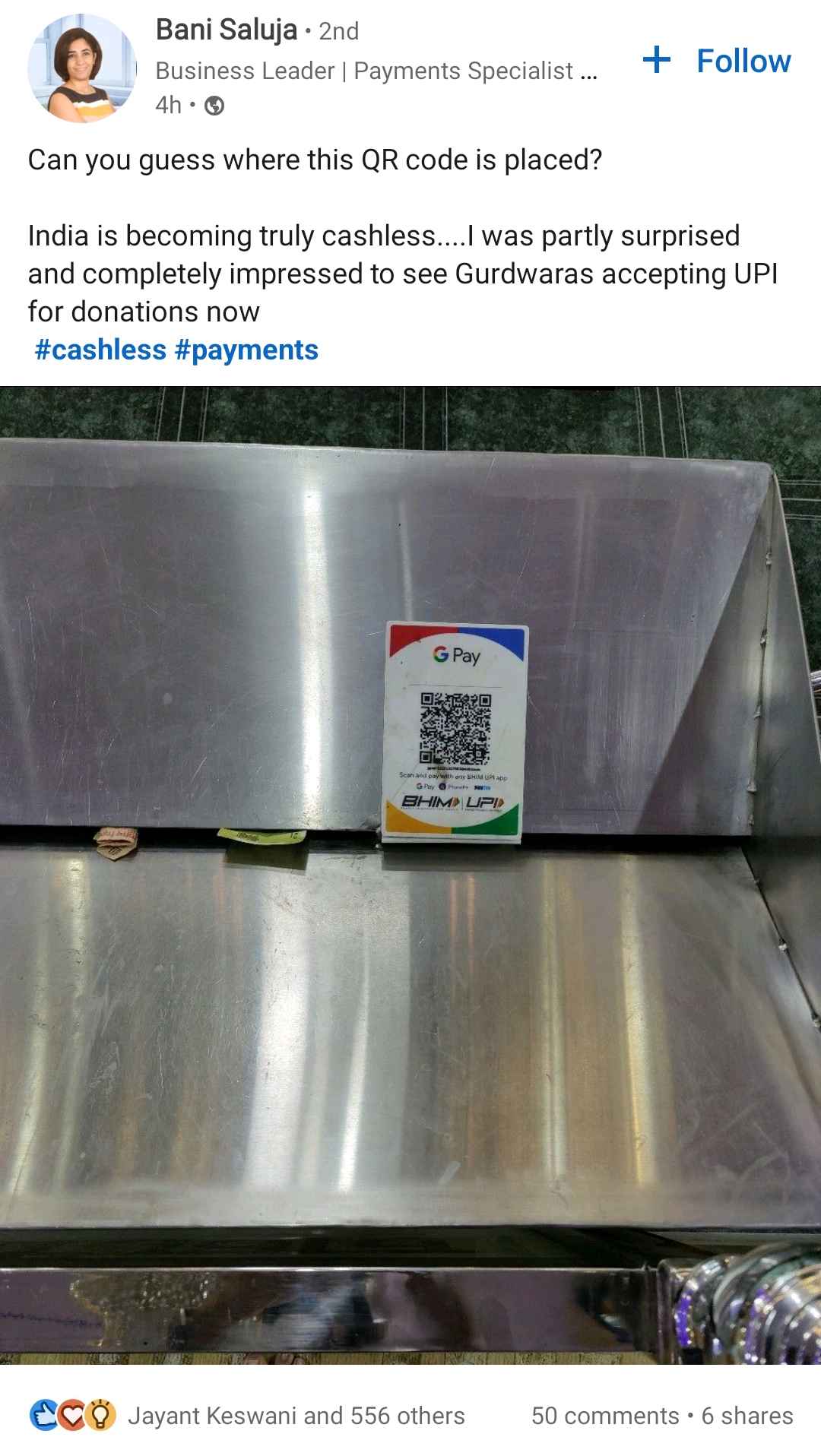
The intent behind giving money (whether in cash or in digital forms) is similar when it comes to beggars and temples – we choose to give money without expecting anything in return (which is the case with all other transactions).
To some extent, since the beggar is a fellow human being, his reaction may be something that we may notice (if we are all that observant during that act of small charity), but that’s not why we choose to give money anyway). With a temple hundi, there is zero feedback – it’s just a big steel case with a small window. We put money inside – that’s it.
With digital payments, the beggar need not carry a bowl as much as a temple doesn’t need to display a big steel contraption. A simple QR code at the temple’s premises would do.
But I wonder if there can some user-experience level innovation when it comes to the digital hundi at least.
Just consider the context: Paytm innovated brilliantly with their Soundbox device meant for shopkeepers. The reason behind this invention is both interesting and practical – shopkeepers had to insist on a paying customer showing their phone screen after payment, and they had to check their own account online to confirm that the transaction did go through. The Soundbox ensured that both these actions are not needed at all.
But Paytm’s innovation was at the receiver’s end, not at the payer’s end.
With a temple hundi, is there a possibility of a donor’s end innovation?
The first question, though, is, ‘Why do you even need a donor side innovation?’.
After all, the actual hundi itself does not give any kind of feedback. Neither does the pujari who comes with a plate and you drop rupee notes or coins on the plate.
In fact, for the payers (whether transactional payers or donors), there is just generic feedback based on what each UPI app itself has created. For example, in Paytm, there is the Paytm tune, while in Gpay, it uses its own audible feedback.
But there is some kind of feedback, that too digital and customizable. This was not possible with a temple hundi or you cannot (and need not) train pujaris to offer you feedback.
So, is there a possible way to mark certain numbers that emanate out of temples/temple trusts (and so on) as special numbers so that they could be coded to offer unique feedback specific to the origin of the receiver? Or consider the kind of bank accounts that a temple holds – most banks have a special kind of account for temple trusts (like how Andhra Bank has a Srivari e-hundi account for Sri Venkateswara temple in Tirupathi, or the kind of e-hundi accounts Karnataka Bank has for many temples).
For example, if I scan the QR code at Srirangam’s incredible Sri Ranganathaswamy Temple (around which I grew up early in my life), I could perhaps get a shloka on Lord Rangantha.
Or, if I scan the QR code at Perur’s (Coimbatore) Pateeswarar Temple, I could get a shloka on Lord Pateeswarar (Lord Shiva) as feedback for the completion of the payment.
One line of thought would perhaps be – ‘why complicate the process with all these nuances? It’s just a monetary transaction, that’s it’. I get that. Totally.
But I’m looking beyond myself when it comes to usage and encouraging usage. The joy I may see in my mother’s face when she transfers money via her phone at Perur temple and receives a shloka as feedback would be immense!!
I, with my worldly, middle-aged skepticism, may dismiss this as a gimmick or an unnecessary complication. But user experience is not about thinking of the self and taking decisions. It’s about thinking on behalf of assorted kinds of users and looking at ways to make the process not just functionally useful, but also enjoyable if possible. In most cases, the functionally useful steps may not even register with users – at times, there needs to be an extra level of obviousness so that the action registers.
Gpay’s sender/payer side sound to mark the completion of a transaction is just that. Ditto with Paytm. But it’s now generic, one-sound-for-all.
What if that need not be the case? What if it can be customized for temples? It could be something as small as a temple bell, or a custom shloka specific to that temple.
If we are being imaginative, it could even add visual feedback besides an audible one! Or, it could even be a set of visual or audible feedback that could be sent to the user in turns so that each experience seems new and unique.
If the basic premise is considered acceptable (that there can be unique feedback at the sender’s end too based on who or where it is being sent to), then the kinds of ways we can offer such feedback are limited only by our imagination.
This feedback can also help in a very practical way, besides being an innovative user experience. Most QR codes in temples are placed outside the main structure, closer to the entrance, just like the hundi itself is placed outside. It is prone to scamsters who could print out a colorful replacement QR code for their own number and swap it in place of the temple’s. Since we cannot read a QR code, we may just scan it and transfer money. If there is a visual and/or audible feedback at the donor’s end, that is one way to authenticate the transaction.
